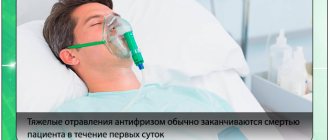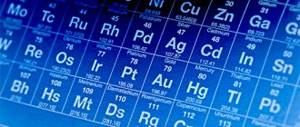Zinc poisoning is sometimes called the disease of welders or printing workers. Normally, the human body contains zinc in small quantities; it is part of hormones and enzymes and regulates physiological processes. Even a slight excess of the permissible concentration of zinc in the blood leads to clinical manifestations of poisoning.
Zinc poisoning during welding occurs most often, because contact with metal vapors increases the risk significantly.
Zinc is a light blue metal that is usually coated with oxide when exposed to air. It is found in its pure form only in chemical laboratories; in nature it is usually found in a mixture with other metals.
Beneficial properties of zinc
Zinc is a trace element that is found in small quantities in plant and animal cells. In the human body, it is present in the blood, bone marrow and epidermis, and is a catalyst for many chemical reactions. In the natural environment it is mined together with polymetallic ores and is not found in its pure form. Artificially purified zinc looks like a silvery substance with a dense structure.
Thanks to the action of zinc, important processes occur in the body:
- clarity of vision improves;
- the skin is cleared of rashes, becomes smooth and healthy;
- the level of sex hormones and prostate function in men are normalized;
- stimulates the production of sufficient amounts of insulin;
- normal activity of the immune system is maintained;
- the metal takes part in hematopoiesis and the transmission of nerve impulses.
Zinc stimulates epidermal renewal, reduces wrinkles, and improves skin color. With a sufficient amount of this element in the body, hair and nails grow faster. A person feels energetic and easily overcomes stress and irritable situations.
The metal is found in foods that are present in the daily menu: seeds, nuts, whole grain flour, cheese, many vegetables and fruits.
Preventive measures
In order to prevent poisoning with zinc compounds, preventive work is especially important. It is aimed at reducing the negative impact of zinc vapor on the worker’s body. So, to prevent poisoning, the welder must:
- Observe safety precautions when carrying out work.
- Carry out work exclusively in a respirator.
- Ensure a constant flow of fresh air and good ventilation in the room.
- Perform work in overalls , gloves and safety glasses.
Thus, zinc vapor poisoning is a fairly common phenomenon during welding work. It can occur when working in a poorly ventilated area or without a protective mask. If symptoms of zinc vapor poisoning occur, seek medical attention immediately. The faster this is done, the lower the risk of negative consequences for the worker’s health. Before the doctors arrive, it is worth providing first aid: remove the welder from the area exposed to zinc vapors, give him plenty of water and, if possible, give him alkaline inhalation.
Zinc is one of the representatives of metals of a light blue hue, when interacting with oxygen, it becomes covered with a thin layer of oxide. Having a weak structure, it is not found in nature, only in some polymetallic ores. In an environment familiar to humans, the element begins to deteriorate, and when heated, white smoke is characteristic.
This element is often used in industry. For example, zinc is used as a protective layer against corrosion in batteries, brass, and other applications.
Causes of zinc poisoning
Zinc in its pure form is harmless to humans . Poisoning is caused by its salts, as well as its oxide (zinc oxide).
Ways of penetration of zinc oxide into the body:
- inhalation of vapors;
- inhalation of dust;
- ingestion.
For stable functioning of the body, a dose of 10–15 mg of Zn per day is sufficient. The need for the substance may increase in the second half of pregnancy, after chemotherapy, and in preparation for sports competitions. The maximum safe daily amount of the substance, according to experts, is 25 mg. Once it is exceeded, an overdose of zinc occurs, which is facilitated by the following situations:
- abuse of vitamin complexes, dietary supplements containing Zn;
- daily use of galvanized cookware for cooking food;
- working with materials containing zinc oxide.
One of the most common methods of poisoning is inhalation of zinc oxide vapor. This substance is used in construction and in the production of paints and varnishes. Therefore, it is easy to get a dangerous dose when performing the following work:
- production of paper products, printing;
- battery production;
- restoration work in the workshop (galvanizing steel);
- painting premises using zinc white;
- production of medicines.
Zinc poisoning during welding work is often found in enterprises. As with mercury poisoning, the substance heats up and partially evaporates, settles on the mucous membranes, and penetrates the blood through the lungs and skin of a person. Therefore, maximum care should be taken when welding galvanized pipes and manufacturing structures containing particles of this metal.
According to experts, zinc oxide is the most dangerous to health. It is converted into zinc vapor and has no odor or color. Poisoning occurs unnoticed, and the first signs of intoxication appear after 8–10 hours.
The role of zinc in the human body and the dangers of excess zinc
Zinc is a component of more than three hundred different enzymes and hormones. It participates in all processes that support the normal functioning of the body, ensuring the development of bone tissue and brain, stimulating cell division and growth, regenerative processes, reproductive function and the immune system, etc. Thus, zinc ranks second after iron in terms of importance for the human body.
However, it should be noted that prolonged intake of zinc salts into the body causes severe intoxication and poisoning (excess zinc most often occurs due to inhalation of vapors of this element). In some cases, serious poisoning can even lead to death.
Normal absorption of zinc in the body is ensured when it is supplied in combination with vitamins A and B6. But the following substances interfere with its absorption:
- Copper;
- Tin;
- Manganese;
- Iron;
- Cadmium;
- Lead;
- Calcium (in cases where it is consumed in large doses);
- Vitamin B9 (folic acid).
Symptoms of poisoning
The main symptoms of a zinc overdose depend on how the metal enters the patient's body. If a person tinned metal objects and received an excess amount of the substance through the respiratory system, specific symptoms begin to appear:
- headache;
- drying of the mucous membranes in the mouth and nasopharynx;
- severe weakness;
- cough;
- burning in the bronchi, tingling;
- tachycardia;
- constant metallic taste in the mouth.
When metal is ingested (with food cooked in galvanized containers), the main impact falls on the digestive system. In this situation, the symptoms of zinc poisoning begin with stomach pain. The condition is accompanied by:
- nausea;
- vomiting;
- severe intestinal upset, loose stools with mucus or streaks of blood;
- drop in blood pressure;
- convulsions.
Such symptoms are characteristic of acute poisoning and help to quickly navigate and take detoxification measures.
It is more difficult to understand the cause of the illness if zinc vapor poisoning occurred gradually, and toxins accumulated over several weeks. The chronic form is difficult to diagnose and manifests itself in the form of constant drowsiness, weakness, and loss of performance. A person feels a metallic taste in the mouth that does not go away after rinsing; tinnitus, dizziness and pain in the kidney area.
First aid for zinc poisoning
If a person, by the nature of his professional activity, works with this metal every day, he should know what to do first in case of zinc poisoning. It is necessary to call an ambulance, and before the specialist arrives, provide the victim with the following conditions:
- remove from the room to the air;
- rinse the larynx and nose with soda solution;
- help cleanse the stomach with plain water.
The first aid kit of enterprises that work with zinc should contain the antidote "Unitiol" . When administered intramuscularly, it quickly binds metal molecules into compounds that are safe for health and removes them from the body with urine and feces within 24 hours. The victim should be closely monitored: large doses of the substance can cause cardiac arrest and respiratory failure.
Safety first
Currently, the hot-dip galvanizing method is the undisputed leader in the anti-corrosion metal treatment market. which is due to such factors as the relatively low cost of zinc and maximum protection of the product from all kinds of influences (zinc coating is not only a mechanical, but also an electrochemical protector of metal structures). According to tests, under normal conditions galvanized steel lasts up to 50 years.
We recommend reading: How to find out the location of the violation by the number of the traffic police resolution
Each stage of galvanizing uses numerous chemicals that are potentially hazardous to both the environment and human health. The issue of security is worth considering in detail.
Treatment of intoxication
The patient must be hospitalized and immediately begin treatment for zinc poisoning. Methods depend on the severity of damage to internal organs and the level of zinc oxide in the blood. In case of severe shortness of breath or heart rhythm disturbances, the following actions are taken:
- additional administration of an antidote (Unithiol) every 4 hours;
- intravenous drip administration of ascorbic acid solution;
- inhalation of alkaline solutions;
- injections of drugs that stimulate the heart.
The patient is given enterosorbents for several days. They accelerate the excretion of zinc oxide from the body through the intestines. You can take white coal, Enterosgel, Laktofiltrum. To improve the functioning of the digestive system, a special diet with sufficient fiber is recommended.
Possible consequences
The harm of zinc oxide depends on the dose received by a person. Exceeding the permissible volume provokes respiratory arrest and brain dysfunction in allergy sufferers. In chronic poisoning, the bronchi and lungs, liver, and kidneys are most affected. Therefore, the consequences can be severe:
- pneumonia;
- atrophy of the mucous membranes of the pulmonary alveoli;
- anemia;
- renal failure.
In some situations, in the absence of medical assistance, the death of the victim is possible. Doctors do not recommend stopping treatment at the first positive results. The patient needs to additionally undergo a course of oxygen cocktails and inhalations with plant decoctions. A visit to the salt room or a trip to the sanatorium has a good effect.
Read what phthalates are and what harm they cause here.
When to see a doctor
You should seek medical help for the following complications:
- The victim's condition deteriorates after first aid is provided.
- The presence of bloody streaks in the vomit and feces.
- The febrile state does not disappear, hallucinations appear, and the victim becomes delirious.
- Vision and hearing deteriorate.
- The victim is unconscious and does not make contact.
- If poisoning occurs in a child, pregnant woman or elderly people, you should immediately go to the hospital.
Prevention
To avoid zinc toxicity, it is necessary to strictly adhere to industrial safety regulations when working with zinc oxide, welding pipes or galvanized metal sheets. To prevent poisoning, it is recommended:
- do not use zinc (galvanized) utensils for storing food and preparing food;
- do not take vitamin complexes without a doctor’s prescription;
- Regularly ventilate the workshop premises, monitor the serviceability of ventilation systems;
- if necessary, use protective equipment (respirators).
When using biological additives, you should carefully study the instructions and do not be lazy to calculate the dosage depending on your weight. It should be remembered that taking large doses of dietary supplements will not improve the condition of the skin or solve the problem of hair loss, but will provoke the development of intoxication.











